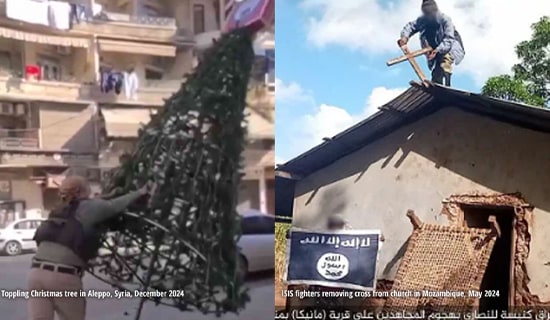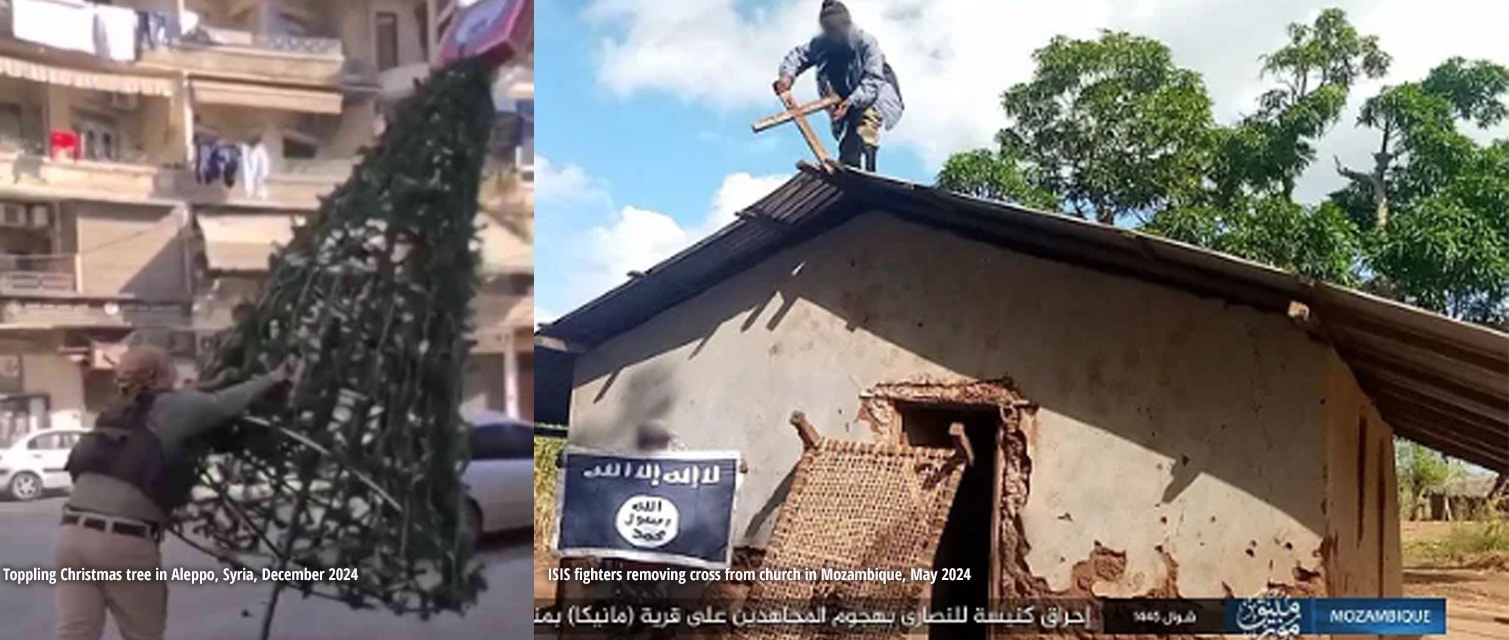Africa is growing and changing in many ways but is still generally ignored when it comes to Western media coverage. If it has gotten any recent attention, it has mostly been as a perceived battlefield for foreign power competition. Russia and China have grown in influence. Meanwhile, France – a traditional African neo-colonial power – has seen, at least for now, its influence drastically reduced in half a dozen countries. The Americans were dramatically kicked out of their $100 million base in Niger. Other influential regional powers, such as the UAE, Turkey, Qatar, and Iran have rediscovered the continent as a place to grow their influence, using both soft and hard power.
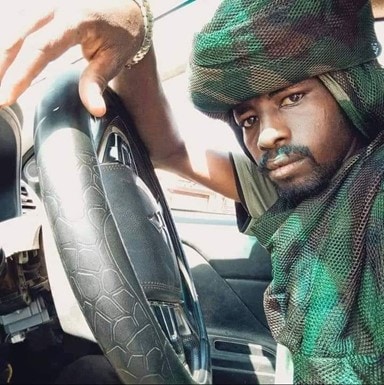
The continent has also evolved into the principal battlefield for Salafi-Jihadism, as the sharpest edge of the global jihadist movement has shifted from the Middle East and South Asia to large parts of Africa. There are aggressive, predatory Salafi-Jihadist insurgencies in West Africa (in the Sahel and in Nigeria), East Africa (Somalia), Central Africa (the Northeast part of the Democratic Republic of the Congo), and Southern Africa (Northern Mozambique).
In all of these regions, Jihadist groups – some allied to Al-Qaeda, others connected to the Islamic State – almost daily kill government forces, target Christians, and inflict constant material losses.[1] These insurgencies are mostly self-sufficient, relying very little on the Arab mother organizations, and in many places, they are growing. Recently, both Somalia and Burkina Faso seem to be particularly worrying Jihadist hot spots. Fatalities in Africa as a result of Jihadist violence in Africa have surged by 56 percent in the past three years.[2]
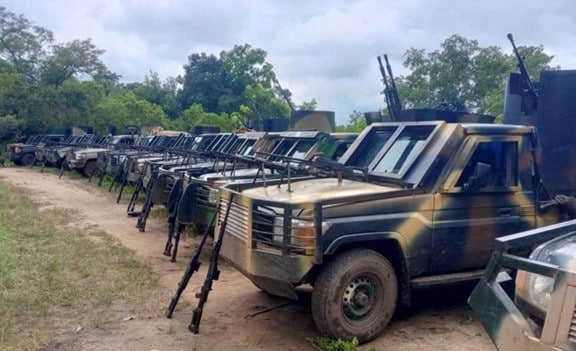
Photo of booty claimed by Jihadist JNIM captured from Burkina Faso Army (2024)
But while Africa is still a venue for competition among outside regional and global powers, and a priority for the Jihadist movements, the latest participants in the scramble for power are non-state, non-Jihadist African movements that have seized the moment as an opportunity to put into place their own ambitious agendas. Three ambitious projects have gained renewed salience over the past year: "Kadamol," Azawad and Somaliland.
"The Republic of Kadamol," to use researcher Alex de Waal's phrase from June 2023, is not a real place and seems unlikely to ever become one.[3] The extent of its real influence, beyond Sudan, is very uncertain. It refers to the possibility of a Pan-Sahel movement or conflict to be led by a union of warlike desert nomad peoples. De Waal coined it to describe the ambitions of Darfuri Arab warlord Muhammad Hamdan Daglo, known as Hemedti, who in April 2023 launched a bitter war against his former allies in the Sudanese Armed Forces (SAF). SAF has traditionally ruled and looted Sudan for most of its history. In the 1980s, SAF began to sub-contract its wars to fighters from cattle-herding and camel-keeping tribes like Hemedti's Rizeigat. The kadamol is the headscarf worn by desert nomads across the Sahel from the Atlantic Ocean to the Red Sea.[4] Today it symbolizes even more the desert raider, which is the core of Hemedti's Rapid Support Forces (RSF).[5] The ongoing war between SAF and RSF has wrecked Sudan and made it the world's worst humanitarian crisis.
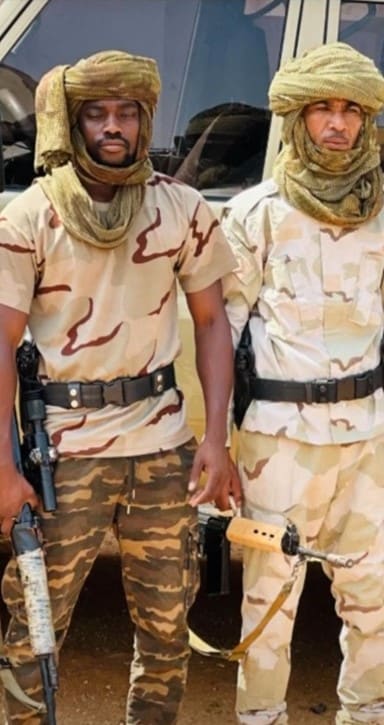
RSF officers near El Fasher, Sudan wearing the combat Kadamol.
Despite various international efforts at securing a ceasefire, humanitarian pause or launching a peace process, both sides continue fighting. Hemedti's desert raiders, initially Darfuri Arab tribesmen now supplemented by fighters from many other African countries, have proven themselves to be capable fighters, controlling much of the West and South of Sudan and excelling in the old desert tactics of hit and run, looting, and living off the land.[6]
But what Hemedti's legions have failed to do utterly is to present any sort of viable political project in the lands they control. These have become chaotic, ill-governed places (even more than they were under SAF and the dictator Al-Bashir) having no attraction for the people condemned to live there. It seems unlikely that a Pan-Sahel political project espousing an Arabo-Islamic supremacy ideology led by such types would have much lasting appeal given the reality on the ground.
There is a possibility that Hemedti could win and try to rule all of Sudan with the help of elements of Sudan's political and managerial elite. That is the likely goal – Hemedti's and his patrons' best-case scenario – but still seems unlikely. More realistically, Kadamol's future influence would seem to be limited to two scenarios – some kind of miserable, ramshackle pseudo-state in Western Sudan or, should the RSF ever be defeated, the ultimate fate of thousands of its battle-hardened fighters. Absent a real political compromise, SAF is unlikely to accept them and has indeed vowed to destroy them.
Even if the Daglo brothers were somehow neutralized, a hard core of thousands of former Janjaweed, perhaps under seasoned and ruthless field commanders like Habib Ali Haraika, would remain and have to go somewhere.[7] In this they would be following a model of regional destabilization pioneered over a decade ago by the second of our movements, in Azawad.

The ephemeral borders of Azawad in 2012-2013
Azawad was the name of the short-lived Tuareg state set up in 2012 after thousands of well-armed Tuareg fighters returned home after service in the Libyan Civil War. Tuareg rebels had struggled against central governments in the Sahel for decades with little real success. Azawad briefly comprised the northern half of Mali and part of Niger under the leadership of the nationalist Mouvement national de libération de l'Azawad (MNLA). But the MNLA was only one of several rebel groups in the region, others were Jihadists. These Jihadists were groups that later joined to become the pro-Al-Qaeda JNIM while other, rival Jihadists formed later the Islamic State – Sahel Province (ISSP).[8]
MNLA was not initially defeated by the Mali army but by Jihadists, groups with whom they had maintained a fraught and fluid relationship. The Jihadists in turn were eventually uprooted from the cities of Northern Mali by French military intervention in 2013. A 2015 peace agreement signed in Algiers gave the Tuareg and other marginalized peoples in Mali a roadmap towards decentralization of local power, and EU and UN funding and peacekeepers (MINUSMA) poured in. The MNLA eventually joined other groups in a new umbrella organization, the Cadre Stratégique Permanent Pour La Paix, La Sécurité Et Le Développement (CSP-PSD) as part of a political process aimed at ensuring peace.
Almost a decade since the Algiers Agreement and what hope there was in that peace accord has unraveled. After a military coup, the Malians ended the MINUSMA presence as well as that of the French and the EU. Russia's Wagner Group, fresh off of relative success in stabilizing the situation in the Central African Republic, arrived in December 2021 to support the new regime. Mali has returned to the status quo ante of Tuareg separatist rebels (now the CSP-PSD) and Jihadists fighting for control against the Malian army (FAMA) and their foreign patrons.
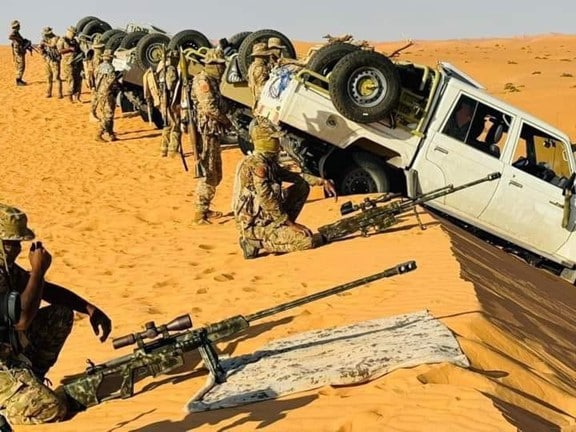
CSP-PSD Tuareg separatist fighters in Mali (August 2024)
On July 25, 2024, the Tuareg separatists scored a major victory against FAMA and Wagner at Tinzaouten in Mali's far north, on the border with Algeria, killing up to 100 enemy soldiers, including many Russians.[9] The action has galvanized the Tuareg separatist military struggle which still faces tremendous odds.[10] They are still often intertwined with or opposed by Jihadists. And not only do they face Russians thirsting for revenge, and government forces seeking to preserve the unity of Mali, but established states such as Algeria and Morocco have their own restive Tuareg/Berber populations and do not wish to see an independent ethnic state (much less a potentially Islamist one) on their borders.
If the Republic of Kadamol was the state that never was and Azawad is the state that briefly was and may never be again, Somaliland is actually the unrecognized African state that has, by far, the strongest chance of survival and even of flourishing. Building peace locally has accomplished more for making Somaliland a reality than tens of thousands of desert warriors have accomplished for Hemedti or for Azawad.[11]
What was once British Somaliland became part of Somalia at independence in 1960 but separated again from Somalia in 1991, in the wake of collapse and civil war after the overthrow of the brutal Siad Barre dictatorship. Since then, Somaliland has sought to go its own way and largely succeeded. The first clause of their 1991declaration of independence declares, "the North should stand up and not follow the South," the South being "Somalia" or whatever government there is in Mogadishu.
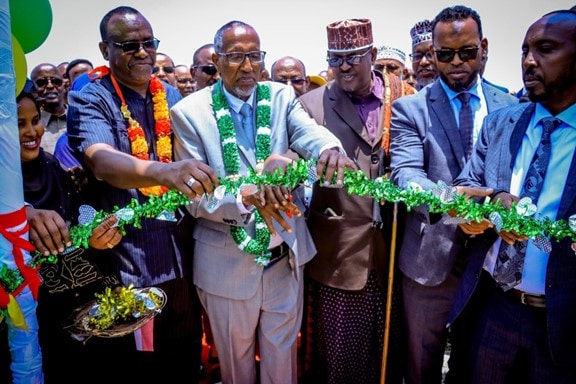
Muse Bihi Abdi, fifth President of the breakaway Republic of Somaliland, cutting a ribbon.
Thirty-three years after that declaration, the de facto Republic of Somaliland is more secure and stable than many internationally recognized states.[12] After a rough start, the break away state has its own currency, government, relative security and has rebuilt much that had been destroyed. They had the advantage that much of the world's attention – when there was any – was focused on the restive South. The Somalilanders were left to themselves, a blessing in disguise.[13]
In 2024, the situation in "the South" has been deteriorating. A peacekeeping force dominated by Ethiopians is to be replaced at year's end by a peacekeeping force dominated by Egyptians.[14] The Al-Shabab terrorist group is still very potent and has made advance in Central Somalia. Somali troops, trained by Turkey, UAE, Egypt and others are sometimes not paid. While Ethiopia has had decent relations with Mogadishu for some time, a January 2024 Memorandum of Understanding between Ethiopia and the Somaliland government giving Ethiopia access to the sea in return for diplomatic recognition has soured relations.[15] Some official voices in Somalia have called for supporting Ethiopian rebels as a response to Ethiopia's growing diplomatic ties with Somaliland.[16]

Anti-FGM event organized by the Somaliland Government
Given how colonial-era border lines are treaty as sacrosanct by the African Union, Somaliland is not going to get broader international recognition any time soon. But the ties with Ethiopia do give Somaliland a powerful ally and an element of protection against foreign (or Somalia) military intervention. The larger question is how stable can Ethiopia itself remain. If Ethiopia continues to gather strength, then Somaliland's survival seems secure.
Borders do change in Africa. There was a time when the idea of an Eritrea or a South Sudan was mostly unacceptable and yet they were established in 1993 and in 2011. What is unclear is whether we are entering an age of renewed instability on the continent, and elsewhere, where new political entities and ethnic states may emerge as the old colonial constructs implode under the pressure of war, bad governance and climate change.
*Alberto M. Fernandez is Vice President of MEMRI.
[1] Africacenter.org/spotlight/mig-2024-africa-constantly-evolving-militant-islamist-threat, August 13, 2024.
[2] Ibid
[3] Worldpeacefoundation.org/blog/sudans-timur-reflections-on-hemedti-and-the-republic-of-kadamol, June 7, 2023.
[4] Youtube.com/watch?v=AosCrUG9pPo, February 9, 2019.
[5] Sudanile.com/%D8%AF%D8%A7%D8%B1%D9%81%D9%88%D8%B1-%D9%85%D9%86-%D8%A7%D9%84%D9%82%D8%A8%D8%B9%D8%A7%D8%AA-%D8%A7%D9%84%D8%B2%D8%B1%D9%82%D8%A7%D8%A1-%D8%A7%D9%84%D9%8A-%D8%A7%D9%84%D9%83%D8%A7%D8%AF%D8%A7%D9%85, April 22, 2021.
[6] Sudanwarmonitor.com/p/map-of-the-areas-of-control-in-sudan-2ea, May 31, 2024.
[7] Youtube.com/watch?v=p_F_LnqYK7k, June 7, 2019.
[8] Hoover.org/research/new-dynamics-sahel-region, June 6, 2023.
[9] Theatlasnews.co/conflict/2024/07/26/tuareg-rebels-ambush-malian-russian-forces-near-algerian-border, July 25, 2024.
[10] X.com/TenereD18896/status/1821468760936452539/photo/1, August 8, 2024.
[11] Saxafimedia.com/somaliland-one-thorn-bush-time, June 14, 2022.
[12] Youtube.com/watch?v=u7eLwLeNLt8, December 4, 2022.
[13] Mondediplo.com/outsidein/somaliland-thirty, May 18, 2021.
[14] See MEMRI Daily Brief No. 646, The Great Game In The Horn Of Africa, September 3, 2024.
[15] Crisisgroup.org/africa/horn-africa/ethiopia-somaliland/stakes-ethiopia-somaliland-deal, March 6, 2024.
[16] Mareeg.com/somalia-threatens-to-support-rebel-forces-in-ethiopia/#google_vignette, September 17, 2024.


